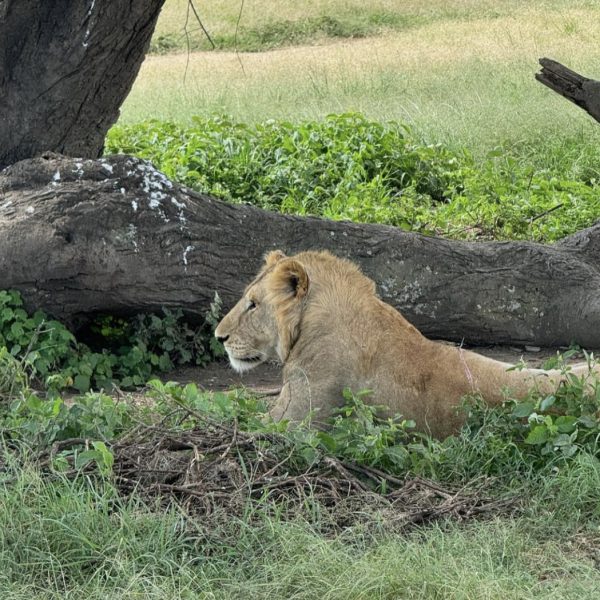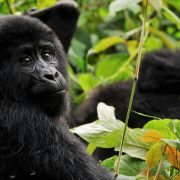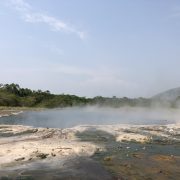
Serengeti National Park : Things to do in Serengeti National Park
Serengeti National Park is one of Africa’s finest national parks well known for its incredible wildlife sightings and African wilderness encounters. The national park is part of the Northern Tanzania Safari Circuit and is the most popular safari destination in the area. A visit to Serengeti National Park is one for the books as it offers visitors a perfect blend of safari experiences in one of Africa’s most popular parks. Serengeti National Park is part of the East African Plateau lying between Lake Victoria to the west and the East African Rift Valley. The park is bordered to the North by the famous Masai Mara Reserve in Kenya, Maswa Game Reserve to the south-west, north –west by the Ikorongo Game Reserve and to the east is the Ngorongoro Conservation Area.
Serengeti National Park which has been a protected area since the 1940s covers an area of 14,763 square kilometers making it the largest national park in Tanzania. The park is a UNESCO World Heritage Site and is recognized globally for its diversity and rich eco system.
The Serengeti is famously known for the annual Great Migration which is the longest overland migration in the world. This annual migration involves millions of wildebeest and zebras as they migrate in search of fresh water and food as the seasons change throughout the year. The annual Great Migration sees over a million wildebeest migrate from the Serengeti National park as they cross north in to the Maasai Mara, they are usually joined by Grant’s gazelle, Thomson’s gazelle and elands along the way. The animals pass through the Mara River and Grumeti River that are filled with about 3000 crocodiles waiting to lunge on them but even this does not stop the animal’s quest for lush green grass and fresh water. The Great Migration is one of the most fascinating wildlife encounters in Africa.
Serengeti National Park Animals
The Serengeti is a wildlife haven as it is home to large mammals, large carnivores and herbivores. The Serengeti is known for offering great chances of seeing Lions as more than 3,000 lions live in the park’s eco system. Wildlife in Serengeti National Park include African Leopard, African Bush Elephant, Cheetah, African Buffalo, Black rhinoceros though these exist in few numbers, Spotted hyenas, Caracal, Serval, Honey badger, Striped hyena, Black-backed jackal, Banded mongoose, African wild dog, Common warthogs, Bat-eared fox, African civet, Aardvark, African wildcat, Common genet, Hyraxes, Cape hare, Crested porcupine, Impalas, Wildebeest, Gerenuk, Thomson’s gazelle, African striped weasel, Lesser Kudu, Dik-dik, Bush buck, Golden Jackal, Olive baboons, Vervet monkeys, Klip springer, Greater Kudu, Giraffes , Waterbuck, Grant’s gazelle, Topis, Oribi, Reedbuck, Common Eland, Hartebeest, East African oryx, Bohor reedbuck among others. The Serengeti is home to reptile species that include the Nile crocodile, African Python, Black mamba, Nile Monitor lizard, Jckson’s Chameleon and Black-necked spotting cobra. When it comes to game viewing Serengeti National Park is definitely a top destination to visit while on safari in Tanzania.

Birds of Serengeti National Park
Over 500 species of birds have been recorded at Serengeti National Park making it a popular birding hot spot for birding enthusiasts and ornithologists from across the world. The Serengeti is an Important Bird Area (IBA) with endemic species available at the site, savanna specials, woodland species and birds of prey.
Birds in the Serengeti include Fischer’s Lovebird, Usambiro Barbet, Grey-breasted Spurfowl, Rufous-tailed Weaver, Grey-crested helmet-shrike, Karamoja Apalis, Black-winged prantincole, Malagasy pond heron, Great snipe, Red-throated tit, Pied avocet, Black-winged stilt, Ruppell’s Vulture, Kori Bustard, Black-headed gonolek, Grey-backed fiscal, Green-backed woodpecker, Southern ground hornbill, Hikdebrandt’s Starling, Silverbird, Schalow’s Turaco, Yellow-throated sandgrouse, Red-capped robin-chat, Verreaux’s eagle, Common Ostrich, Egyptian goose, African black duck, Yellow-billed duck, African pygmy goose, Helmeted guineafowl, Scaly Francolin, Little grebe, Speckled Pigeon, African Olive pigeon, Laughing dove, Fiery-necked nightjar, Freckled night jar, White-browed Coucal, African emerald cuckoo, Grey crowned crane, Denham’s bustard, White-bellied Go-away bird, Hartlaub’s Turaco, Hamerkop, Little egret, African Spoonbill, Hadada Ibis, Great cormorant, African darter, Spotted thick-knee, Crowned lapwing, African hawk eagle, Tawny eagle, Lizard buzzard, Lappet-faced Vulture, Hooded vulture, Martial eagle, Crowned eagle etc. The Serengeti is a rich birding site and one is able to tick off a number of species in just a day.
Top Things to do in Serengeti National Park
Game drives in The Serengeti
Game drives are one of the top activities to do while on safari in Serengeti National Park. The park is best experienced while on full day game drives in the park that start in the morning and run throughout the day. Morning hours offers the best sightings mainly because the first hour of daylight provides opportunity to see the predators on the move so it’s best to have an early or packed breakfast from the lodge so that you start out your day much earlier (6am). Spend the day exploring the central circuit of The Serengeti which has a dense population of wildlife and other habitats in the park’s ecosystem that usually have herbivores and predators like lions present searching for the day’s hunt. The Serengeti is also known for its rocky hills known as koppies where you can usually find wildlife like the klipspringers, hyraxes, leopard and nesting raptors. The game drives also offer one spectacular views of the expansive grassland plains of The Serengeti, a true African spectacle.

Great Migration in Serengeti National Park
The Great Migration is the most popular attraction in The Serengeti and it happens each year. The Great Migration is a magical wildlife encounter that involves visitors watching thousands of zebras and wildebeest as they cross from the Serengeti to the Mara, this unique encounter involves seeing the struggle that animals go through as they traverse the waters filled with crocodiles ready to hunt them. The Great Migration usually happens between June and October and it involves dense numbers of wildebeest, zebras, and antelopes travelling long distances from Northern Serengeti in Tanzania up to the Maasai Mara National Reserve in Kenya. The River crossings are not predictable as it is a natural wildlife encounter but it normally happens between the months of June – August. The Great Migration season is a magical wildlife spectacle and it is advisable to plan for the trip a year in advance as it tends to attract visitors from across the world to witness the migration.
Bird watching in Serengeti National Park
Birding in The Serengeti is a worthwhile adventure especially for specialist birders as Serengeti National Park is an Important Bird Area (IBA) making it possible to tick off endemic bird species. The site is also a hot spot for migratory birds especially during the months between November to April. Birding happens in different habitat areas in The Serengeti including open savanna plains, around perennial rivers like the Mara and Grumeti, in the evergreen woodland areas and around Lake Ndutu. The most sought after birds while on birding safari in Serengeti include the Usambiro barbet, Fischer’s Love bird, Grey-breasted spurfowl and Grey-crested helmet-shrike.
Cultural Tours ( Maasai Village Tour )
The Maasai are a famous ethnic group of Kenya and known for their fearsome warrior culture. A visit to a Maasai village brings you closer to the local people and also offers you a glimpse in to their culture and way of life. You will be taken through the history of how they used to live in The Serengeti before the conservation area was officially gazetted as a national park. This is a great way to spend an afternoon while on safari in Tanzania. The Maasai are also known for their colorful traditional wear that consists of colorful sheets and radiant beaded jewelry as well as their interesting traditional dance that involves jumping up high.
Sun downers and Bush Meals
Serengeti National Park is a perfect destination for bush meals amidst Tanzania’s largest and oldest national park. With its open savanna plains and scenic landscape, the park offers perfect spots for bush breakfast, a private picnic or bush lunch all while enjoying expansive views of the The Serengeti. Sun downers are also another great way to spend your time in the Serengeti especially after full day game drives in the reserve, you get to end the day watching the sunset while sipping on your favorite drink.
Walking Safaris
Walking safaris is one way to experience the wildlife of The Serengeti on foot, an activity that is more physically engaging and involves walking in the wilderness and rhino protection zones of Serengeti. The multi-day walking trails bring you up close to the wildlife and are guided with armed park rangers who walk with you for the entire safari. Walking safaris are a worthwhile experience as you get to spend the night in the Serengeti wilderness under the stars at a movable camp. The walking safaris take between two days to seven days depending on the time one would like to spend walking in The Serengeti. Birding is great while on the walking safari, great chances of spotting Serengeti specials.
Hot Air Balloon Safari
The hot air balloon safari in Serengeti offers stunning views of the national park and wildlife in The Serengeti. It is such a magical and fulfilling adventure that takes you around the park while experiencing it from a bird’s view. Serengeti National Park is one of the best places to do the hot air balloon safari and is a great option if looking to do something different from the car game drives in the park. The balloon safari involves flying over the Ndutu area, Central Serengeti, western Serengeti and Northern Serengeti.
Drive to Retina Hippo Pool
The Retina hippo pool is located in Central Serengeti and offers the best chances to watch hippos as they cool off and relax in the pool. The hippo pool also attracts other wildlife species that like to forage near the area hence offers great sightings and wonderful photo moments. The Retina hippo pool is situated where the Seronera and Orangi rivers interest and about 200 hippos can be seen meddling in the waters.
Serengeti National Park Accommodation
Serengeti National Park has a good numbers of accommodation facilities that one can stay at. We often times recommend staying at least two safari lodges if you have provision for more days on safari as this helps you experience more of Serengeti National Park and its sections. Safari Lodges that we recommend in The Serengeti include;
&Beyond Klein’s Camp – Set within a private concession just outside the national park, Kleins’s camp by &Beyond is a luxury accommodation facility that offers tranquility and comfort while on safari in Serengeti. The Camp features 10 en-suite bandas with king-sized beds, well-stocked bathroom, hot showers, a swimming pool and an exquisite lounge area overlooking the hilly private concession. You can watch this detailed YouTube video below by our Safari Specialist Ritah that details of a room tour at &Beyond Klein’s Camp;
Serengeti Serena Lodge – This is an up market lodge situated in the Seronera area of the park and is a comfortable lodge with Maasai-style inspired rooms. Rooms available at the safari lodge include standard rooms and suites that feature comfortable beds, bathroom with hot showers and clean linen. The lodge has other facilities that include an infinity pool, a dining room and gift shop and central barbecue area.
Mbugani Camp – Mbugani Camp is a mid-range camp well known for its incredible staff and beautiful location. Picture waking up to beautiful sunrise views and ending the day watching the sun set over this tented camp. The tents are set in the midst of the wilderness and they feature good beds with warm beddings, hot water showers, flushing toilets an outdoor sitting area. Mbugani Camp is located in Central Serengeti and sometimes wildlife visit this camp and sounds of animals can be heard from outside your tent especially at night.
Best time to visit Serengeti National Park
Serengeti National Park can be visited and is open to visitors throughout the year however the best time to visit is during the dry season/months. The dry months run from June to September, during this season the park has shorter grass and this offers easy opportunities to watch wildlife from across the open grassland plains of The Serengeti. The wet months of November to May are also fulfilling as the scenery is lush and green during the wet months. The wet season also works well for visitors who want a more private safari as the number of visitors is less than the dry season. The best time for visitors interested in bird watching is between the months of November to April as migratory birds from Europe and North Africa are present in the park.






